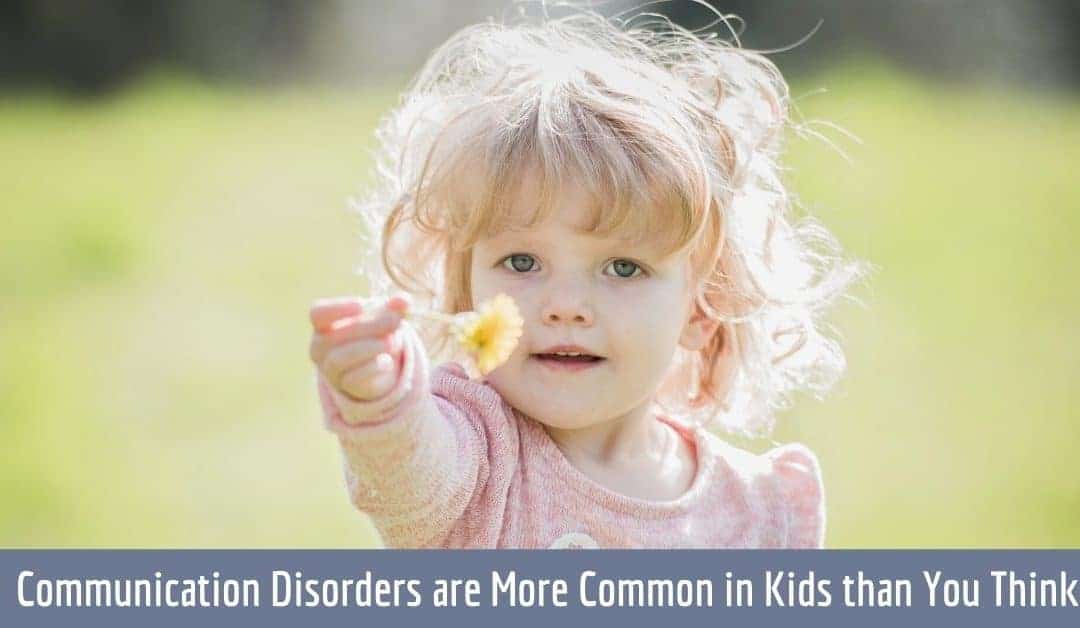Over 10% of children have a communication disorder, which is among the most common disabilities among kids. According to the National Institute on Deafness and Other Communication Disorders:
- For kids between the ages of 3-17, nearly 1 in 12 has had a disorder related to voice, speech, language, or swallowing
- Nearly 11% of children among children ages 3-6 have a communication disorder
These statistics highlight that communication disorders are much more common in children than we think. Though it’s common, identifying and addressing communication disorders is often delayed for quite some time. Untreated symptoms can profoundly impact learning, behavior, and social engagement. This affects performance in school as well as cognitive and social development. Being aware of common communication disorders and their impact is crucial to being able to identify and effectively address symptoms!
Common Communication Disorders
There are several types of communication disorders which are often related. They involve varying levels of difficulty with speech, voice, and language comprehension. Common disorders include:
- Phonological Disorder: is related to speech, children who deal with this disorder have difficulty with developing the level of speech appropriate for the specific age group. They may have a hard time articulating words, producing complex sentences, substitute particular words and/or sounds etc.
- Expressive Language Disorder: is characterized by difficulty with verbal communication. Children may struggle to remember words, use the proper tense, have limited vocabulary, use really simple sentences and basic words etc.
These are broad disorders that may be experienced mildly to profoundly. There are also specific types within these disorders which share key characteristics of restricted ability to express and comprehend verbal communication.
Causes & Symptoms
One of the most common causes of communication disorders among children is hearing loss. Nearly 15% of children have some degree of hearing loss in one or both ears. This health condition can be caused by existing medical conditions, genetic history, or exposure to loud noise. Impaired hearing can significantly strain communication, causing:
- Sounds be muffled or slurred
- Difficulty distinguishing words and following conversations
- Limited ability to hear in environments with noise
- Tinnitus which is a buzzing or ringing noise in one or both ears
These symptoms make engaging in conversations difficult. The ability to hear and process information is restricted which can produce communication disorders. Other causes of communication disorders include:
- Autism
- Attention deficit or hyperactivity disorder
- Developmental or neurological disorder
- Brain injury
- Nervous system disorder
If untreated, symptoms can worsen which can be detrimental for a child’s development. There are effective ways to treat communication disorders that can alleviate symptoms and drastically improve educational and behavioral patterns.
Treatment Options
The specific type of communication disorder (and cause) your child may be experiencing determines the most effective treatment option. Fortunately, there are useful ways to address and treat communication disorders which can include the following:
- Behavioral Therapy: this kind of intervention focuses on developing effective skills to manage disruptive behavior – intrapersonal and communication skills. This is particularly useful for children with attention deficit or hyperactivity disorder who could benefit from having coping strategies and ways to focus.
- Speech Therapy: focuses on building and expanding communication skills by developing language, articulation, and fluency skills.
- Changes to Environment: additional time, attention, aid, and quieter space can be really useful
In addition to these treatment options, your child’s hearing should absolutely be assessed to determine if this is contributing to the communication issues. You can do this by scheduling an appointment with a hearing healthcare professional for a hearing test.
Hearing tests involve a relatively quick and painless process that measures hearing ability in both ears. This establishes any impairment, the degree, and specific type of hearing loss your child may be experiencing. Fortunately, there are effective ways that hearing loss is treated. The most common treatment is hearing aids which are small, electronic devices designed to absorb, amplify, and process sound. This increases a person’s ability to hear which enhances communication.
It is important to identify any issues with communication and hearing that your child may be dealing with. Early intervention can profoundly help with treatment and improve overall health!

